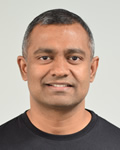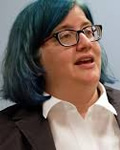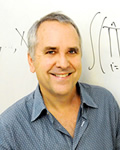
People to Watch 2018
AB Periasamy
Co-Founder and CEO of Minio
 Anand Babu (AB) Periasamy is a free software contributor, angel investor, and an entrepreneur. AB is CEO, co-founder of Minio, an open source object storage. Prior to Minio, AB co-founded Gluster, an open source distributed filesystem (acquired by Red Hat). In 2004, as the CTO of California Digital Corp., AB led the development of world’s second fastest Supercomputer code named “Thunder”.
Anand Babu (AB) Periasamy is a free software contributor, angel investor, and an entrepreneur. AB is CEO, co-founder of Minio, an open source object storage. Prior to Minio, AB co-founded Gluster, an open source distributed filesystem (acquired by Red Hat). In 2004, as the CTO of California Digital Corp., AB led the development of world’s second fastest Supercomputer code named “Thunder”.
Datanami: Congratulations on being named a Datanami Person to Watch in 2018! You’re on-record with your admiration of Amazon’s S3 object store. Considering the struggles people have had with Hadoop, do you think the market will be receptive to an S3-compatible object store that’s open source?
AB Periasamy: Thank you for the recognition. This is a great honor. Complete credit goes to my team.
BigData in the public cloud is based on object storage. SAN and NAS are considered as a legacy. Amazon EMR/Athena Azure PowerBI/AzureML, and Google BigQuery all operate on object storage directly. Data is captured via Kafka and Fluentd like streams and stored as objects. This trend has just started in the private cloud with Minio in combination with Spark, Presto, and Drill. It seems like there is no better alternative to object storage to store large amounts of unstructured at the moment.
Datanami: You’ve declared your intention with Minio is to “solve storage.” Where are we on that journey at this point?
In the last three years, Minio has grown from zero lines of code to the fastest growing private cloud storage with 50M docker pulls, 2000+ slack members, 10K GitHub stars and worldwide deployments. It will be three years before we make any significant commercial progress. Solving storage is going to be a moving target. There is a long journey ahead.
Datanami: How big of an impact do you think containers will have on how we architect big data systems?
Ignoring containers will be like ignoring cloud. Amazon, Google, and Microsoft made significant progress in bringing big data to their public cloud infrastructure. The impact is huge.
Datanami: What do you hope to see from the big data community in the coming year?
Hadoop is designed for a large number of cheap CPUs over a slow network. GPUs, Terabytes sized persistent memory, and 50/100 GigE networks will deliver better economics due to their density. Rearchitect your big data infrastructure with dense in-memory computing to take full advantage of these innovations.
Personally, I would like to see a blockchain based audit system for data. It should verify and automatically log all access and mutations to the data since its inception.
Datanami: Outside of the professional sphere, what can you share about yourself that your colleagues might be surprised to learn – any unique hobbies or stories?
I still watch SpongeBob SquarePants. Most people don’t know that I am very much of an introvert. It makes me nervous to meet new people or visit new places.






































